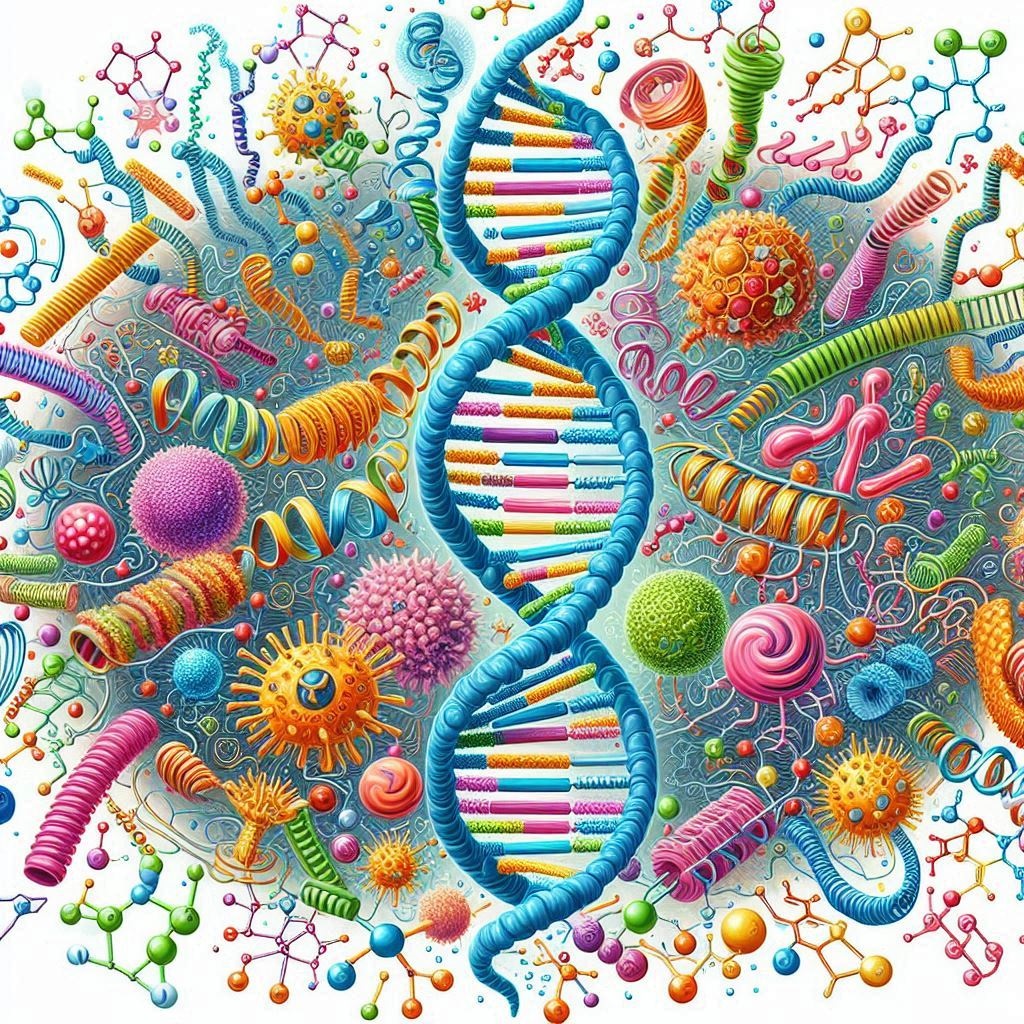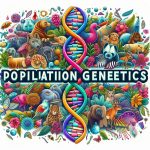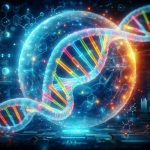Understanding Epigenetics
Epigenetics is the study of changes in gene expression that do not involve alterations to the underlying DNA sequence. This field explores how various factors such as environment, lifestyle, and disease can modify gene activity. For a comprehensive introduction, visit Nature.
Mechanisms of Epigenetic Modifications
The primary mechanisms of epigenetic modifications include DNA methylation, histone modification, and non-coding RNA molecules. These modifications can activate or silence genes, impacting various biological processes. For more details on these mechanisms, refer to NCBI.
Epigenetic modifications refer to changes in gene expression that do not involve alterations to the underlying DNA sequence. These modifications can be influenced by various internal and external factors, including diet, stress, and environmental exposure. The main mechanisms include DNA methylation, histone modification, and non-coding RNA molecules.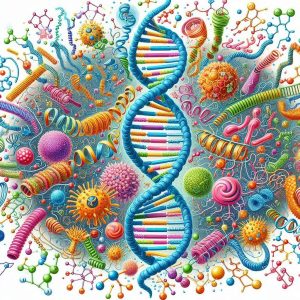
DNA Methylation
DNA methylation is one of the most studied epigenetic mechanisms. It involves the addition of a methyl group to the 5th carbon of the cytosine ring in DNA. This process is catalyzed by enzymes known as DNA methyltransferases (DNMTs). Methylation typically occurs at CpG sites (regions where a cytosine nucleotide is followed by a guanine nucleotide).
- Gene Silencing: DNA methylation usually acts to repress gene transcription. For instance, hypermethylation of tumor suppressor genes can lead to their silencing, contributing to cancer progression. For further reading, visit Cancer.gov.
- Genomic Imprinting: This is a process where genes are expressed in a parent-of-origin-specific manner. Methylation marks are established in the germline and maintained through cell divisions. Learn more at Nature.
- X-Chromosome Inactivation: In females, one of the X chromosomes is inactivated to balance the gene dosage between males and females. This inactivation is heavily reliant on DNA methylation. For a detailed explanation, see NCBI.
Histone Modification
Histone modifications involve covalent post-translational modifications of histone proteins, which include acetylation, methylation, phosphorylation, ubiquitination, and sumoylation. These modifications can alter the chromatin structure and affect gene expression.
- Histone Acetylation: This process is generally associated with gene activation. Histone acetyltransferases (HATs) add acetyl groups to histone tails, neutralizing their positive charge and reducing their affinity for DNA, thus making the DNA more accessible for transcription. For more details, visit NCBI.
- Histone Methylation: This modification can lead to either gene activation or repression depending on the specific amino acids in the histone tail that are methylated. For example, methylation of histone H3 on lysine 4 (H3K4) is associated with gene activation, while methylation on lysine 9 (H3K9) is linked to gene repression. Learn more at NCBI.
- Histone Phosphorylation: This modification is often associated with chromatin condensation during cell division and DNA repair processes. For further reading, check NCBI.
Non-coding RNA Molecules
Non-coding RNAs (ncRNAs) are RNA molecules that do not encode proteins but play significant roles in regulating gene expression at the transcriptional and post-transcriptional levels. These include microRNAs (miRNAs), long non-coding RNAs (lncRNAs), and small interfering RNAs (siRNAs).
- MicroRNAs (miRNAs): These are small (~22 nucleotides) RNA molecules that can bind to messenger RNA (mRNA) and inhibit its translation or lead to its degradation. For more information, visit Nature.
- Long Non-coding RNAs (lncRNAs): These are longer RNA molecules (>200 nucleotides) that can regulate gene expression by various mechanisms, including chromatin remodeling, transcriptional interference, and acting as molecular scaffolds. Learn more at NCBI.
- Small Interfering RNAs (siRNAs): These are double-stranded RNA molecules that can silence gene expression by degrading mRNA after transcription, preventing translation. For further details, see Nature Reviews Molecular Cell Biology.
Epigenetic modifications are dynamic and reversible, allowing cells to respond rapidly to environmental changes. Understanding these mechanisms provides crucial insights into developmental biology, disease progression, and potential therapeutic strategies. For comprehensive resources and updates on epigenetics, visit ScienceDirect.
DNA Methylation
DNA methylation involves the addition of a methyl group to DNA, typically at cytosine bases. This process can suppress gene expression and is crucial for normal development, genomic imprinting, and X-chromosome inactivation. For further reading, visit Genome.gov.
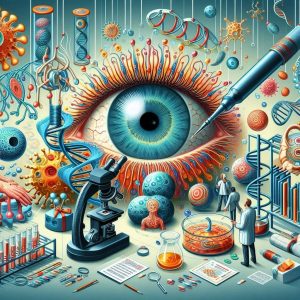
Role and Mechanism
The primary role of DNA methylation is to regulate gene expression. It is essential for normal development, cellular differentiation, and maintaining genomic stability. When methyl groups are added to cytosines in CpG islands (regions with a high frequency of CpG sites), the gene expression can be repressed. This repression is achieved by preventing the binding of transcription factors or by recruiting proteins that compact the chromatin structure, making it less accessible for transcription.
- Gene Silencing: Methylation of promoter regions typically silences gene expression. This is critical in processes like X-chromosome inactivation and genomic imprinting. For more on gene silencing, see NCBI.
- Genomic Imprinting: This involves methylation patterns that are inherited from parents, leading to monoallelic expression of certain genes depending on their parental origin. Learn more at Nature.
- Transposon Silencing: DNA methylation helps to silence transposable elements, preventing their movement within the genome, which could otherwise cause mutations. For further details, visit Cell.
DNA Methylation and Disease
Aberrant DNA methylation patterns are associated with various diseases, including cancer, neurological disorders, and autoimmune diseases. For instance, hypermethylation of tumor suppressor genes can lead to their silencing, contributing to cancer progression. Conversely, hypomethylation can result in the activation of oncogenes or genomic instability.
- Cancer: Abnormal DNA methylation patterns are a hallmark of cancer. Hypermethylation of CpG islands in promoter regions of tumor suppressor genes leads to their inactivation. For a detailed review, check Cancer.gov.
- Neurological Disorders: Diseases such as schizophrenia, bipolar disorder, and Alzheimer’s have been linked to aberrant DNA methylation patterns. For more information, visit NCBI.
- Autoimmune Diseases: Changes in DNA methylation are associated with autoimmune diseases like lupus and rheumatoid arthritis. Learn more at Nature Communications.
Technologies for Studying DNA Methylation
Advances in technology have enabled detailed analysis of DNA methylation patterns. Techniques such as bisulfite sequencing, methylated DNA immunoprecipitation (MeDIP), and methylation-specific PCR (MSP) are commonly used to study DNA methylation.
- Bisulfite Sequencing: This technique involves treating DNA with bisulfite, which converts unmethylated cytosine to uracil, while methylated cytosine remains unchanged. Sequencing can then determine the methylation status. For a comprehensive overview, visit Genome Biology.
- Methylated DNA Immunoprecipitation (MeDIP): This method uses antibodies specific to methylated cytosine to enrich methylated DNA, followed by sequencing or microarray analysis. Learn more at Nature Protocols.
- Methylation-Specific PCR (MSP): MSP differentiates between methylated and unmethylated DNA by using primers specific to either methylated or unmethylated sequences following bisulfite treatment. For further reading, see NCBI.
Therapeutic Potential
Understanding DNA methylation has significant therapeutic potential. Epigenetic therapies, such as DNA methyltransferase inhibitors (e.g., azacitidine and decitabine), are being developed to reverse abnormal methylation patterns in diseases like cancer. For more information on therapeutic applications, visit NCBI.
DNA methylation is a crucial component of the epigenetic landscape, influencing gene expression and contributing to the regulation of various biological processes. Ongoing research continues to uncover the complexities of DNA methylation and its implications for health and disease. For more updates and detailed studies, visit ScienceDirect.
Histone Modification
Histone modifications involve chemical changes to histone proteins, around which DNA is wrapped. These modifications, such as acetylation and methylation, can alter chromatin structure and regulate gene expression. For more information, see Cell.
Non-coding RNA Molecules
Non-coding RNAs, including microRNAs and long non-coding RNAs, play significant roles in regulating gene expression. They can interact with DNA, RNA, and proteins to influence gene activity. Learn more at Frontiers in Genetics.
Applications of Epigenetics
Epigenetics has profound implications in various fields including medicine, agriculture, and environmental science. It offers insights into the development of diseases like cancer, potential therapeutic targets, and the effects of environmental factors on gene expression. Explore applications in medicine at Cancer.gov.
| Application | Details | Reference |
|---|---|---|
| Medicine | Understanding epigenetic changes in diseases like cancer and diabetes. | Cancer.gov |
| Agriculture | Developing crops with improved traits through epigenetic modifications. | Nature |
| Environmental Science | Studying the impact of environmental factors on epigenetic modifications. | EPA |
Challenges and Future Directions in Epigenetics
The field of epigenetics holds immense potential for advancing our understanding of gene regulation, development, and disease. However, there are several challenges that researchers face, as well as exciting future directions that promise to revolutionize the field. For an overview of epigenetics, visit Nature.
Challenges in Epigenetics
Despite significant advances, the field of epigenetics faces numerous challenges that must be addressed to fully realize its potential. These challenges include technological limitations, complexity of epigenetic regulation, and the need for more comprehensive data.
- Technological Limitations: While technologies like bisulfite sequencing and chromatin immunoprecipitation (ChIP) have advanced our understanding of epigenetic modifications, there is still a need for more sensitive, accurate, and high-throughput methods. Current techniques can be expensive, time-consuming, and sometimes require large amounts of starting material. For more on epigenetic technologies, see NCBI.
- Complexity of Epigenetic Regulation: The interplay between different types of epigenetic modifications (such as DNA methylation, histone modifications, and non-coding RNAs) is highly complex. Understanding how these modifications interact and influence each other requires sophisticated models and comprehensive studies. Learn more at NCBI.
- Need for Comprehensive Data: Large-scale epigenomic projects, such as the ENCODE project, have generated vast amounts of data. However, integrating and interpreting this data to understand the functional consequences of epigenetic modifications remains a significant challenge. For further reading, visit ENCODE.
- Translational Challenges: Applying findings from epigenetic research to clinical practice is complex. Epigenetic modifications are dynamic and can vary across different tissues and stages of development, making it challenging to develop universal biomarkers or therapeutic targets. For insights into translational epigenetics, see Nature Reviews Genetics.
Future Directions in Epigenetics
Despite these challenges, the future of epigenetics is bright, with several promising directions that could transform our understanding and application of this field. Advances in technology, personalized medicine, and integrative approaches are key areas of focus.
- Advances in Technology: The development of new and improved technologies, such as single-cell epigenomics and CRISPR-based epigenome editing, will enhance our ability to study and manipulate epigenetic modifications with greater precision. For more on these technologies, visit NCBI.
- Personalized Medicine: Epigenetics offers the potential for personalized medicine approaches, where treatments are tailored based on an individual’s epigenetic profile. This could lead to more effective interventions for diseases like cancer, where epigenetic modifications play a significant role. Learn more at NCBI.
- Integrative Approaches: Combining epigenetic data with other omics data (such as genomics, transcriptomics, and proteomics) will provide a more comprehensive understanding of biological processes and disease mechanisms. For further details, see Nature Reviews Genetics.
- Environmental Epigenetics: Studying how environmental factors such as diet, pollutants, and lifestyle influence the epigenome will enhance our understanding of the gene-environment interaction and its impact on health. For more on environmental epigenetics, check Nature Reviews Genetics.
Emerging Therapeutic Strategies
Epigenetic therapies, such as the use of DNA methyltransferase inhibitors and histone deacetylase inhibitors, are already in clinical use for certain cancers. Future therapeutic strategies may include targeting specific epigenetic modifications or pathways to treat a wider range of diseases, including neurological disorders and autoimmune diseases. For insights into epigenetic therapies, visit NCBI.
- Precision Epigenetics: Leveraging CRISPR-based tools to precisely edit epigenetic marks holds promise for targeted therapies with minimal off-target effects. For more information, see Nature Biotechnology.
- Epigenetic Biomarkers: Identifying and validating epigenetic biomarkers for early diagnosis, prognosis, and treatment response will enhance clinical decision-making. For a comprehensive review, visit NCBI.
- Drug Development: Developing new drugs that specifically target epigenetic modifications or their regulatory enzymes could offer novel treatments for various diseases. For further reading, see Nature Reviews Drug Discovery.
The field of epigenetics is rapidly evolving, with new discoveries and technologies continually expanding our understanding of gene regulation and its implications for health and disease. Addressing the current challenges and exploring future directions will unlock the full potential of epigenetics, paving the way for innovative treatments and personalized medicine. For ongoing updates and research in epigenetics, visit ScienceDirect.
Conclusion
Epigenetics offers exciting possibilities for understanding and manipulating gene expression without altering the DNA sequence. As research advances, its applications in medicine, agriculture, and environmental science will continue to grow, providing new insights and solutions to complex biological challenges. For ongoing updates, visit ScienceDirect.
FAQs on Epigenetics
What is epigenetics?
Epigenetics is the study of heritable changes in gene expression that do not involve changes to the underlying DNA sequence. It involves modifications such as DNA methylation, histone modification, and non-coding RNA associated gene silencing. For an introduction to epigenetics, visit Genome.gov.
How does epigenetics differ from genetics?
While genetics involves the study of genes and their sequences, epigenetics focuses on how gene expression is regulated by chemical modifications to DNA and histone proteins. These modifications can be influenced by environmental factors and can be inherited without changing the DNA sequence. For more information, visit Nature.
What are the main types of epigenetic modifications?
The main types of epigenetic modifications include DNA methylation, histone modification, and RNA-associated silencing. Each of these modifications can affect gene expression and play a role in development and disease. Learn more at Nature.
Can epigenetic changes be reversed?
Some epigenetic changes can be reversible, which is why they are a target for therapeutic interventions. For example, drugs that inhibit DNA methyltransferases or histone deacetylases can reverse certain epigenetic modifications. For more on epigenetic therapy, visit NCBI.
What role does epigenetics play in disease?
Epigenetic changes are associated with various diseases, including cancer, neurological disorders, and autoimmune diseases. These changes can alter gene expression and contribute to disease progression. For more details, visit NCBI.
How is epigenetics studied?
Epigenetics is studied using various techniques such as bisulfite sequencing, chromatin immunoprecipitation (ChIP), and RNA sequencing. These methods allow researchers to analyze DNA methylation, histone modifications, and non-coding RNA, respectively. For further reading, see NCBI.
Disclaimers and Cautions
Epigenetics is a rapidly evolving field: The information provided here is based on current research and understanding. As the field progresses, new discoveries may lead to changes in our understanding of epigenetics. For ongoing updates, visit Nature.
Consult healthcare professionals: If you have specific health concerns or questions about how epigenetics might relate to your health, it is important to consult with qualified healthcare professionals. Epigenetic research is complex and still in development, and personalized advice should come from professionals. For more information, visit NCBI.
Ethical considerations: Epigenetic research and its applications raise important ethical questions, particularly regarding privacy, consent, and the potential for misuse of epigenetic information. It is essential to consider these ethical implications and adhere to guidelines and regulations in research and clinical practice. For further reading, see NCBI.
Environmental impacts: Environmental factors such as diet, pollution, and lifestyle can influence epigenetic modifications. Understanding these impacts requires careful study and consideration of multiple variables. For more on environmental epigenetics, visit Nature Reviews Genetics.

